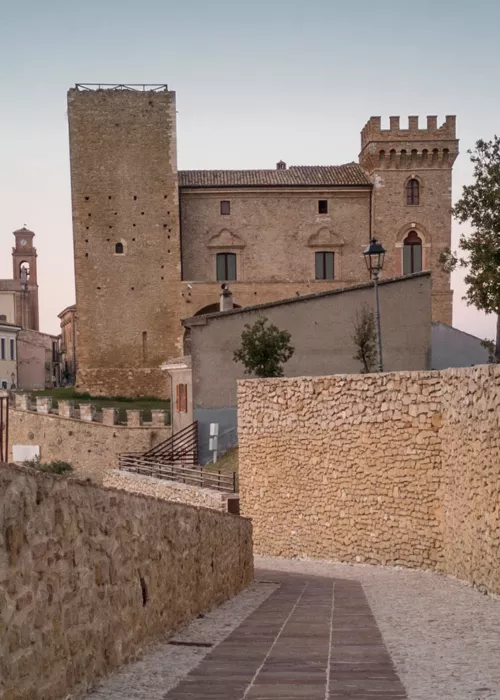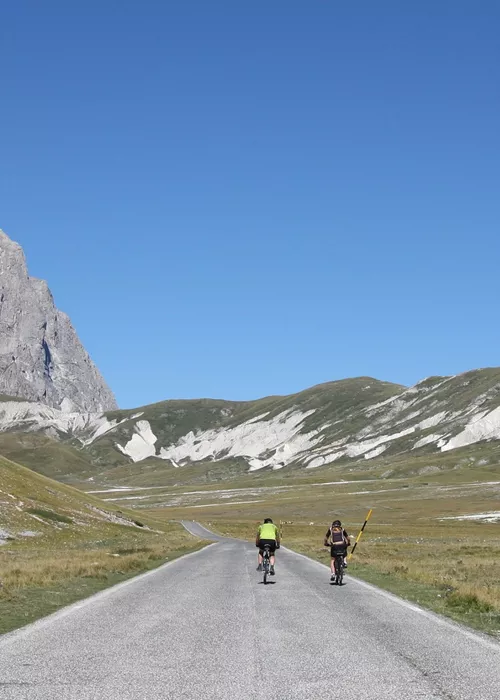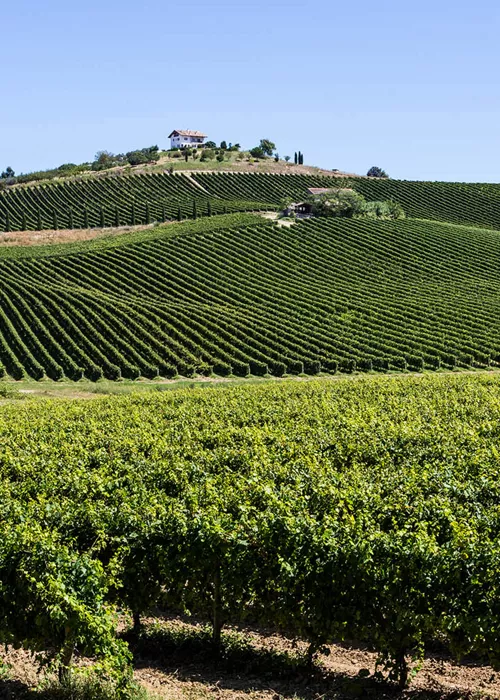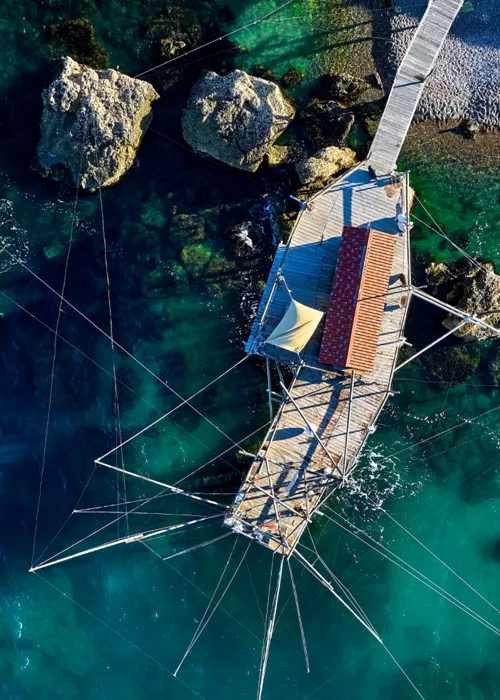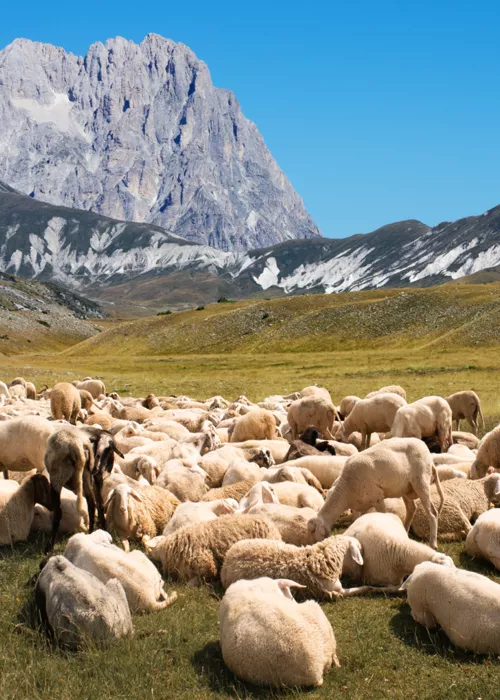Fossacesia

Sailing along the Rotta dei Trabocchi, you will arrive at Fossacesia's Marina del Sole, a modern, state-of-the-art marina that is the ideal starting point for exploring the enchanting Tremiti Islands. Once moored, you can set off to discover Fossacesia, one of the most important seaside resorts on the Costa dei Trabocchi. The town is divided between the historical centre, rich in public buildings and aristocratic villas built from the 17th century on the gentle hills of the Theatine province that descend to the Adriatic Sea, and the marina, rich in accommodation facilities along the pebbly shore, where equipped bathing establishments alternate with public beaches. Fossacesia has an ancient history, inhabited in pre-Roman times by the Frentani, in the Middle Ages it became the fief of the splendid Cistercian Abbey of San Giovanni in Venere, a splendid example of Benedictine architecture that dominates the wide gulf below from the top of the Promontorio di Venere, whose name derives from a pagan temple dedicated to the cult of the goddess Venus Conciliatrice, dating back to the times of Caesar or Augustus. Head north up the coast along the Via Verde (Green Path) of the Costa dei Trabocchi, built on the old railway line, overlooking the crystal clear waters of the Adriatic. Here you can admire the picturesque trabocchi, ancient fishing boats suspended over the sea, almost all of which have been converted into restaurants where you can enjoy typical seafood dishes. Before reaching San Vito Chietino, in the hamlet of Vallevò, in the municipality of Rocca San Giovanni, it is possible to visit the “Grotta delle Farfalle” Regional Reserve, with its luxuriant vegetation typical of the wider river valleys.
San Vito Chietino

Another popular seaside resort on the Costa dei Trabocchi, San Vito Chietino is characterised by its dual nature: a picturesque old town perched on a hill from where you can see the peaks of the Gran Sasso d'Italia, and a marina with sandy and pebble beaches where equipped bathing establishments alternate with free beaches. The historic centre can also be reached on foot from the coast, along a path immersed in luxuriant vegetation and characterised by the presence of numerous historic fountains. The town is famous for its links with the poet Gabriele D'Annunzio. The Trabocco Turchino, one of only two public buildings along the coast, and the nearby D'Annunzio Hermitage, were the setting for the tragedy 'The Triumph of Death'. The Hermitage, where D'Annunzio lived in the summer of 1889, is a place where one can be transported back in time by the enchantment and seduction of nature. This love nest of the poet and his beloved Barbara Leoni now houses her mortal remains, transferred from the Verano cemetery in Rome. The nearby D'Annunzio promontory offers a spectacular view of the immensity of the sea, adding a touch of poetry to the landscape. Not to be missed is the archaeological area of Murata Bassa, between the cycle path and the sea, which contains the remains of a Roman villa dating back to the 1st century BC, one of the most important on the Abruzzo coast, and of an ancient furnace for the production of oil lamps dating back to the 2nd century AD.
Ortona

The northern gateway to the Costa dei Trabocchi, the itinerary continues through the picturesque pine forest of the Punta dell'Acquabella Regional Reserve in the Ortona area, ideal for picnics and outdoor fitness. Ortona is characterised by its fascinating Aragonese castle, which rises majestically over the sea. The town has a large, sandy, well-equipped beach, which has been awarded the Green Flag by the Paediatricians' Association and is ideal for families and children. Must see attractions include the picturesque Passeggiata Orientale and the historic Palazzo Farnese, where you can enjoy breathtaking views and immerse yourself in history. A unique experience is a visit to MuBa43, the Battle Museum, dedicated to the events of the Second World War, with an original model of the destruction of the city during the historic firefight in December 1943. Near the castle is the Basilica of St Thomas the Apostle, which houses the saint's relics and attracts thousands of pilgrims every year. Continuing inland on paved roads with little traffic, the route passes through Crecchio, one of the most beautiful villages in Italy. Dominated by the Ducal Castle, it was home to the Savoy royal family who fled after the armistice of 8 September 1943 and now houses the Museum of Byzantine and Early Medieval Abruzzo. Finally, before reaching your next stop in Guardiagrele, be sure to explore the wonders of this fascinating village.
Guardiagrele

In the morning of the third day, the itinerary continues to Guardiagrele, the famous stone town described by D'Annunzio in "The Triumph of Death" and one of the most characteristic villages in Abruzzo. This enchanting village at the foot of the Maiella Madre offers a unique experience of artistic beauty, craft traditions - from copper and wrought iron work to goldsmithing - and food and wine delicacies, including the famous Sise delle Monache cakes, available only in the historic local pastry shops. Guardiagrele, a member of the Club of the Most Beautiful Villages in Italy, is home to numerous exhibition spaces, including the Cathedral Museum, the Medieval Antiquarium, the Museum of Costume and Tradition of Our People and the Archaeological Museum. Not to be missed is a visit to the Collegiate Church of Santa Maria Maggiore, built entirely in white Maiella stone, with a 13th-century bell tower and a 15th-century ogival portal. To reach the final stop at Fara San Martino, the route winds through the hairpin bends of the Maiella, passing the Bocca di Valle Adventure Park, ideal for families with children, and then Pennapiedimonte, the stonemasons' village known as the Matera of Abruzzo. Here you can set out on a trek from the panoramic Belvedere del Balzolo or try your hand at climbing in the Vertical Park. Finally, the itinerary leads to Palombaro, where the suggestive cave of Sant'Angelo is located, 800 metres above sea level. Here you can admire the remains of a small rock church with walls made of square stone blocks, a semicircular apse and a rocky, jagged floor.
Fara San Martino

Thanks to the purity of the waters of the Verde River, Fara San Martino has become the capital of Abruzzo in the production of dried pasta, known and appreciated throughout the world. The village has preserved its mediaeval beauty, with the remains of the walls and the watchtower still visible. It is the only village in Abruzzo to be a member of the Association of Authentic Italian Villages and to fly the orange flag of the Italian Touring Club. Immersed in the evocative landscape of the Majella National Park, it has a Visitor Centre where you can get to know the territory through a small Nature Museum, which tells about the typical places on the eastern side of the mountain and organises activities to raise awareness of environmental issues. It is also possible to hire mountain bikes and take part in the many excursions organised by the Park's environmental guides. These include a pleasant walk of about one kilometre to the source of the Verde River, along a footpath bordered by a wooden fence, surrounded by waterfalls and unspoilt nature. Continuing along the same path, the gorge of San Martino opens up with a narrow passage between high rock walls, offering a natural spectacle not to be missed. The gorge, which is about 14 kilometres long and has a difference in altitude of 2,400 metres, is called the Valle di Santo Spirito, the Valle di Macchia Lunga and the Valle Cannella. Just beyond the gorge are the remains of the monastery of San Martino in Valle, a Benedictine jewel in the rock, recently brought to light. The site includes the entrance courtyard, a chapel, a portico, the church with an ashlar portal, altars, small columns and decorated bas-reliefs.






